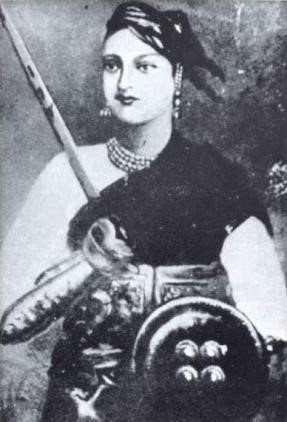Trade To Territory Class 8 Questions and Answers - Free PDF Download
FAQs on NCERT Solutions For Class 8 Social Science History Chapter 2 Trade To Territory (2025-26)
1. What is the correct method to use NCERT Solutions for Class 8 Social Science Chapter 2 for effective exam preparation?
For best results, first attempt to answer the textbook questions on your own. Then, use the NCERT Solutions to verify your answers and understand the correct format. Pay close attention to how long answers are structured with an introduction, key points, and a conclusion, as this follows the recommended CBSE pattern for the 2025-26 session.
2. How should I structure the answer for the NCERT question on the 'subsidiary alliance' in Chapter 2?
A well-structured answer on the subsidiary alliance should include the following points:
- Definition: Explain that it was a treaty forced upon Indian rulers by the East India Company.
- Key Conditions: Mention that rulers had to disband their own armies, host British troops (a 'subsidiary force'), and pay for their maintenance. They also had to accept a British 'Resident' in their court.
- Consequence: Conclude by stating that this policy led to Indian states losing their sovereignty and becoming dependent on the British.
3. What key points must be included when solving the NCERT exercise on the 'Doctrine of Lapse'?
When answering the question on the Doctrine of Lapse, ensure you include these essential details:
- The Policy: It was an annexation policy stating that if an Indian ruler of a dependent state died without a natural male heir, their kingdom would be annexed by the British.
- The Architect: Mention that the policy was widely implemented by Lord Dalhousie.
- Examples of Annexation: List key states annexed under this doctrine, such as Satara (1848), Sambalpur (1850), Udaipur (1852), Nagpur (1853), and Jhansi (1854).
4. What are the essential points to cover when answering the NCERT question about Tipu Sultan, the 'Tiger of Mysore'?
To provide a complete answer about Tipu Sultan, your solution should cover his relationship with the British. Key points include his strong resistance, his modernisation of the army with French assistance, the four significant Anglo-Mysore Wars fought, and his eventual death while defending his capital, Seringapatam, in 1799.
5. While solving NCERT questions, how can a student differentiate between the Subsidiary Alliance and the Doctrine of Lapse?
The key difference lies in their application and purpose. The Subsidiary Alliance was a political agreement where the British controlled a state's military and foreign affairs while the ruler remained, making the state dependent. In contrast, the Doctrine of Lapse was a policy of direct annexation, used to absorb a kingdom into the British empire entirely upon the death of a ruler without a natural heir. One was a method of control, the other a method of outright seizure.
6. How do the NCERT Solutions for Chapter 2 explain the significance of the Battle of Plassey in establishing Company power?
The solutions highlight that the Battle of Plassey (1757) was a decisive victory for the East India Company not just militarily, but politically. It was the Company's first major victory in India, which gave it control over the vast revenues of Bengal. This financial power was then used to expand its military strength and annex more territories, marking the true beginning of the Company's rule in India.
7. What steps should be followed to answer the NCERT question explaining the East India Company's transition from a trading entity to a territorial power?
To correctly answer this, outline the process chronologically:
- Start with the Company securing trading rights and concessions (farman) from Mughal emperors.
- Explain the conflicts with local rulers, like the Nawabs of Bengal, over loss of revenue and assertion of authority.
- Detail the pivotal military victories, especially the Battle of Plassey and the Battle of Buxar, which gave them administrative rights.
- Describe the implementation of political policies like the Subsidiary Alliance and the Doctrine of Lapse to control and annex states without direct war.
- Conclude with how this gradual process transformed the Company from traders into the de facto rulers of India.
8. Besides direct military attack, what were the main administrative methods used by the Company to annex Indian kingdoms, as per Chapter 2?
The NCERT solutions emphasise that the Company's expansion was not solely based on military conquest. Two key administrative and diplomatic policies were crucial:
- The Subsidiary Alliance: This policy weakened states from within by making them financially and militarily dependent on the British.
- The Doctrine of Lapse: This policy provided a pretext for annexing states based on succession rules, which was a political and administrative justification for takeover. These policies highlight the Company's use of shrewd political strategy to expand its territory.




















